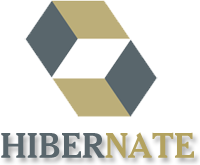|
91-9990449935 0120-4256464 |
Hibernate Tutorial
This hibernate tutorial provides in-depth concepts of Hibernate Framework with simplified examples. It was started in 2001 by Gavin King as an alternative to EJB2 style entity bean. The stable release of Hibernate till July 16, 2014, is hibernate 4.3.6. It is helpful for beginners and experienced persons. Hibernate FrameworkHibernate framework simplifies the development of java application to interact with the database. Hibernate is an open source, lightweight, ORM (Object Relational Mapping) tool. An ORM tool simplifies the data creation, data manipulation and data access. It is a programming technique that maps the object to the data stored in the database. 
The ORM tool internally uses the JDBC API to interact with the database. Advantages of Hibernate FrameworkThere are many advantages of Hibernate Framework. They are as follows: 1) Opensource and Lightweight: Hibernate framework is opensource under the LGPL license and lightweight. 2) Fast performance: The performance of hibernate framework is fast because cache is internally used in hibernate framework. There are two types of cache in hibernate framework first level cache and second level cache. First level cache is enabled bydefault. 3) Database Independent query: HQL (Hibernate Query Language) is the object-oriented version of SQL. It generates the database independent queries. So you don't need to write database specific queries. Before Hibernate, If database is changed for the project, we need to change the SQL query as well that leads to the maintenance problem. 4) Automatic table creation: Hibernate framework provides the facility to create the tables of the database automatically. So there is no need to create tables in the database manually. 5) Simplifies complex join: To fetch data form multiple tables is easy in hibernate framework. 6) Provides query statistics and database status: Hibernate supports Query cache and provide statistics about query and database status.
Next TopicHibernate Architecture
|













